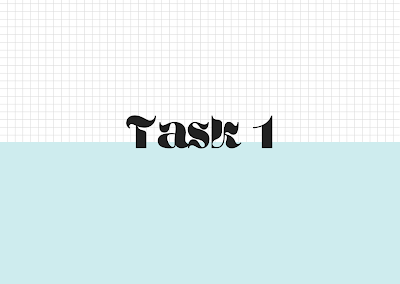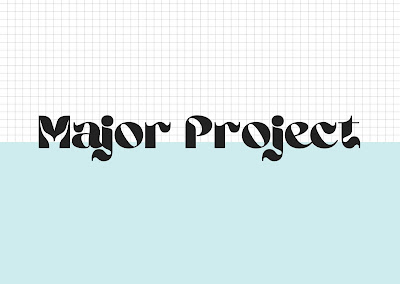Creative Brand Strategy: Task #1— Case Study & Campaign Proposal
28.03.2022 - 19.04.2022 (Week #1 - Week #4)
Seerat Tayyab Mukhtar Qureshi - 0345576 (BDCM)
Creative Brand Strategy
Task #1— Case Study & Campaign Proposal
1. Lectures
Week #1: Introduction to Module
In this module, we will be further advancing the understanding of Brand Experience which is about
designing a sensory experience that brings a person into a lasting and meaningful relationship with a brand.
A brand strategy defines rules and guidelines on how, what, where, when and to whom you communicate
your brand messages. A brand strategy is essential because it provides clarity about the
competitive landscape, market position and customer expectations.
Week #2: Branding Process
Branding is not simply about creating a logo, strapline and graphic to implement onto a company, country or person. A brand encompasses the perception of it and its reputation, as well as its tangible look and feel.
Increasing global consumption and new technologies that have enhanced global communications have driven this progress in branding and brand awareness.
Campaign & cause campaign
A continuous attempt to communicate a message to its audience that usually stays for a longer period of time.
Cause marketing is marketing done by a for-profit business that seeks to both increase profits and better society in accordance with corporate social responsibility
Customer Journey Map
A Customer Journey Map is a visual representation of the customer journey. It helps to identify customers’ experiences with the brand across all touchpoints in all stages.
Week #3: The Creative Brief
Any new campaign will need a hook or theme that you will want people to recall, share and act upon. A campaign’s big idea is the overarching message that underpins all elements of a campaign in order to resonate with the target audience. The big idea emerges in the process of narrowing the focus.
Brand Touchpoints can be defined as the interactions and exposures that
a consumer can have with a brand. Every interaction a customer has with
your company is essentially a touchpoint
Mood board
A mood board is a succinct collection of visual assets that represents a brand’s visual identity. It supports the designer to be inspired and directs the artistic style, tone & manner through which the brand communicates.
Design direction
We need to develop a set of mood boards that comprise:
Campaign Logo
Wordmark
Colour Palette
Primary & Secondary (colour meaning & symbolism)
Typography
Headline, sub-headline, body text
Visual Style
Illustration / Pattern / Graphic Element / Photography
2. Instructions
Module Information Booklet
3. Task #1
1A: Case Study
For this part of the task, we had to pick out a social cause campaign and study it. I remembered Dawn's Wildlife campaign and decided to go with it since I think it was quite impactful globally.
Fig 1.0: Final Submission Task #1A, PDF
1B: Campaign Proposal
For this part of the task, we had to propose our own cause campaign and come up with all aspects of it. I had a few ideas— anti-fast fashion, environmental or anti-war. I decided to go with anti-war because it is something quite relevant to modern times.
Fig 1.2: Brainstorming and refining movement
I was a bit unsure of what kind of direction I wanted to take with the anti-war. I was confused between making it region-specific or just in general. After a discussion with Ms Li Lian, she helped guide me on what route I should take. She suggested I do a more general campaign and then pick out regions to use as examples. With this, I started working on my final slides and customer journey map.
Fig 1.3: Slides progress
Fig 1.4: Customer Journey Map progress
After Ms Li Lian's feedback, I made a few changes to my work. I added a few more touchpoints to my customer journey map to emphasise participation in the movement more.
Fig 1.5: Customer Journey Map progress
Fig 1.6: Final Submission, PDF
4. Feedback:
Week #2: I should not make my movement specific to a region because that may restrict it. I could use the regions of my interest as an example or statistics. This would make it a lot easier as well since I won't have to go through so much historical context. Ms Li Lian said I should also start thinking about my customer journey map and prepare it for next week.
Week #3: Ms Li Lian mentioned my overall progress was good and there are some areas I need to refine a bit more. For my target audience, I should reconsider the middle-class because she mentioned that they are usually quite comfortable and don't have the drive to change. For my customer journey map, I can add more about how people can participate in this campaign, e.g. merchandise, peaceful protests, stickers etc. I can add more about customer participation and the touchpoints of that.
Additionally, Ms Li Lian gave me feedback on Task 1A, she said the content was good but my slides template was a bit visually challenged. I could've taken inspiration from their website which was more minimal and simple.
5. Reflection:
Experience: This is the first experience we have gotten of what exactly brand strategy entails. I think the process of analysing and ideating our own campaigns highlights this very well. I enjoyed the experience of being in a physical class again and getting to have live discussions.
Observation: What I observed during this task, especially Task 1A is how carefully crafted brand campaigns are. There is so much to take into consideration and it helped narrow down and refine my own campaign. I observed the unique ideas my classmates had for their campaigns and how we as individuals formulate them so differently yet so similarly.
Findings: I find myself looking forward to seeing my movement come together. Campaigns are not things that happen naturally, they take a lot of thought and consideration. The idea has to be something you are passionate about or it won't end too well.
6. Further Reading:
I think the Vietnam War is a great example of how people can drive change. This article by The Guardian showcases the posters made by students in the 1970s anti-war movement. These visuals were made after the Kent State massacre which was the killings of four and wounding of nine other unarmed Kent State University students by the Ohio National Guard on May 4, 1970.
A lot of these posters are raw and full of emotion.
Reading this article really emphasised how important visuals and design are in pushing a movement. Having a meaningful and popular purpose behind the movement is also essential. This helps unite the people and gives them hope and optimism for change.
I think what I can take away from this article and movement is that not only is this a serious topic, but it is also something close to people. This can help me harness the potential power that united communities hold.
Overall, reading this article was super interesting and I noted how much visual techniques have changed in 50 years. Although this wasn't a campaign like mine, the core message is the same which shows that mine has just as much potential to be successful as well.









Comments
Post a Comment